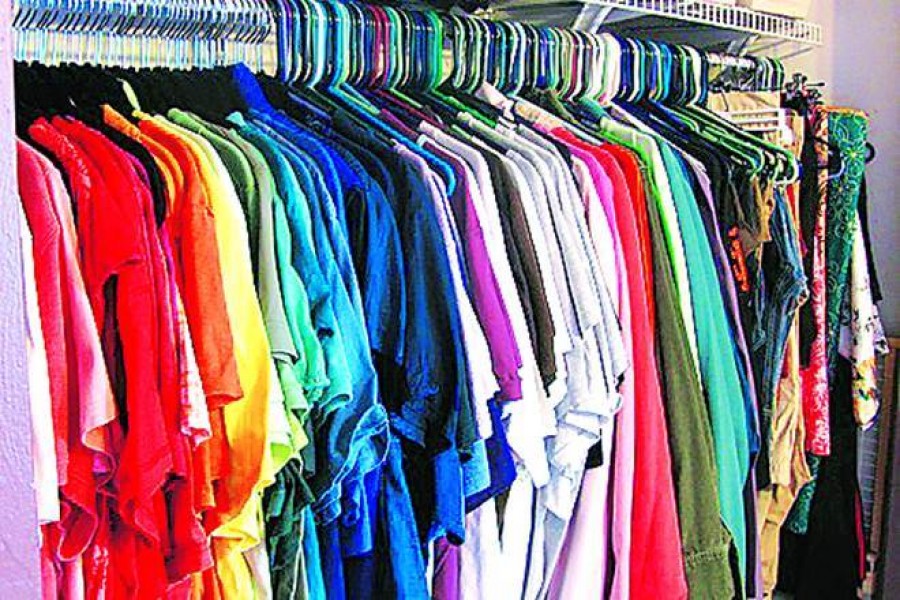It is fashionable for many in the country to contemplate on tapping into China's share in global apparel export. However, when we speak of taking a portion-a small one-from China's market share of apparel, how many of us try to figure out China's actual share in the global apparel market? Currently, China's share is an overwhelming 41per cent of world apparel exports as against 6.0 per cent held by Bangladesh-the country next only to China. On the flip side, this huge Chinese export is only 7.0 per cent of China's total exports, which in case of Bangladesh is a whooping 83 per cent.
The World Bank's 'Stitches to Riches Report' while furnishing this interesting data lends further insight into other pertinent matters relating to global apparel market. One of the key issues analysed in the report attempts to examine the probable fallout from a decline in Chinese exports in near future and the way it might reflect in the apparel exporting countries in the Asian region.
According to the aforementioned report, a 10 per cent increase in Chinese apparel prices would raise the Southeast Asian countries' export to the US by 37-51 per cent, while the export of South Asian countries would grow by 13-25 per cent (depending on the country). The underlying reason is that the rank of Vietnam and Cambodia in terms of quality, lead time and social compliance are higher than the South Asian countries like Bangladesh and India.
The report says that there is a huge opportunity for filling in the gap likely to be caused by Chinese price hike in the very near future. But chances for Bangladesh to be in a position to reap the benefit in a desirable manner appear to be slim. As Bangladesh lags behind Vietnam, Cambodia and Indonesia in competitiveness, a rise in Chinese apparel prices would offer more benefits to the other Southeast Asian countries.
China's pricing, the lowest in the past decades, began to soar due to major hike in the wage structure in recent times. Besides, China also made it known that it was not going to stick to low-end products, as high wages would force these products slip into other low-wage manufacturers. In fact, this reality has been doing the rounds for sometime now, and the countries looking up to the prospect included all formidable competitors in the South Asian region. But as things stand now, it is not low wage that counts most. True, most of the apparel exporting countries in the region have competitiveness on cost-related factors, but when it comes to productivity along with low wage, the latter weighs down as the single important factor. Though the wage structure in Bangladesh is the lowest, worker's productivity in Vietnam, Cambodia and Indonesian is higher than those of Bangladesh and India, the report added.
It said that a 10 per cent increase in Chinese apparel prices in the US market would increase employment in Bangladesh by 4.22 per cent in the sector, but for the EU market, apparel employment would drop by 0.74 per cent for males and 0.77 per cent for females.
Employment of Bangladesh for the EU market would experience small decrease because the country's trade estimates do not imply that Bangladesh is a close substitute for Chinese apparel products in the EU market.
The report forecasts that a 10 per cent increase in Chinese export prices would result in the US's increasing imports from India and Bangladesh by 14.62 per cent and 13.58 per cent respectively. South Asia's competitor countries would benefit even more from rising Chinese prices and Vietnam's exports would increase by 37.70 per cent and Cambodia's by 51.25 per cent.
The report also said that rising Chinese apparel prices would have little, if any, effect on Bangladeshi and Pakistani exports to the EU.
The report highlighted that Bangladesh needs to improve performance on non-cost factors, important to global buyers. 'Successfully implementing reforms will help Bangladesh increase exports and capture more jobs from China's gradual exit from the clothing market and compete with Vietnam, Cambodia, and Indonesia,' it said.
To expand apparel exports and jobs in South Asia, the report suggests adopting policies to increase market access, ease import barriers for manmade fibre, improve export logistics and facilitate foreign investment. 'If it fails to do so-and fails to do so quickly-it risks losing out on a huge opportunity to create good jobs for development given by China's rising apparel prices,' the report said.
But for the figures of export rise and impact on employment due to possible Chinese hike in apparel prices, the fact that cost factor is not going to dictate terms for long is pretty well known, unless reinforced by productivity and diversification. Bangladesh has so long thrived largely on the cost factor, but now is the time to compound it with non-cost factors where productivity, quality, lead time, reliability and compliance are the key driving forces to increase market share.


